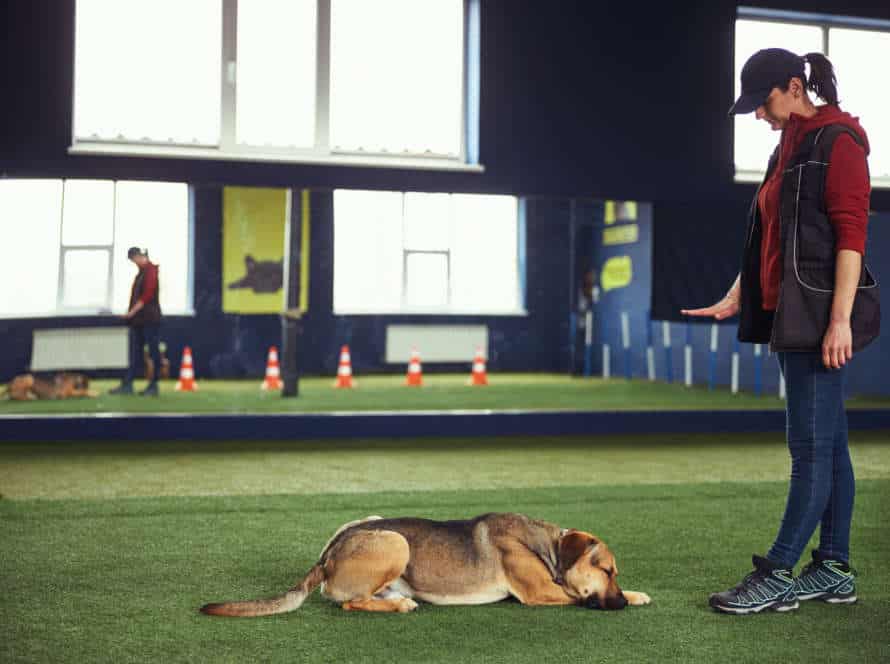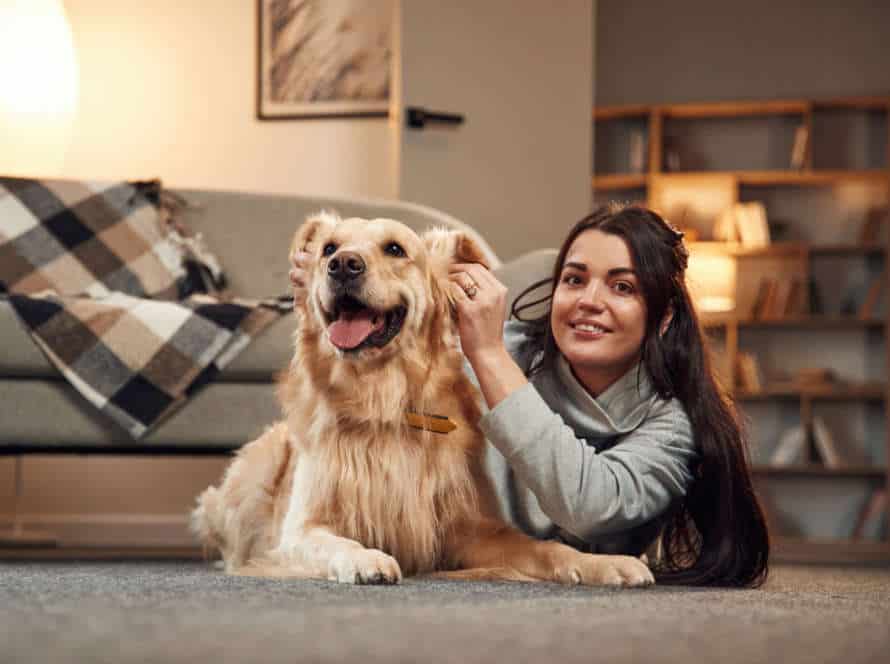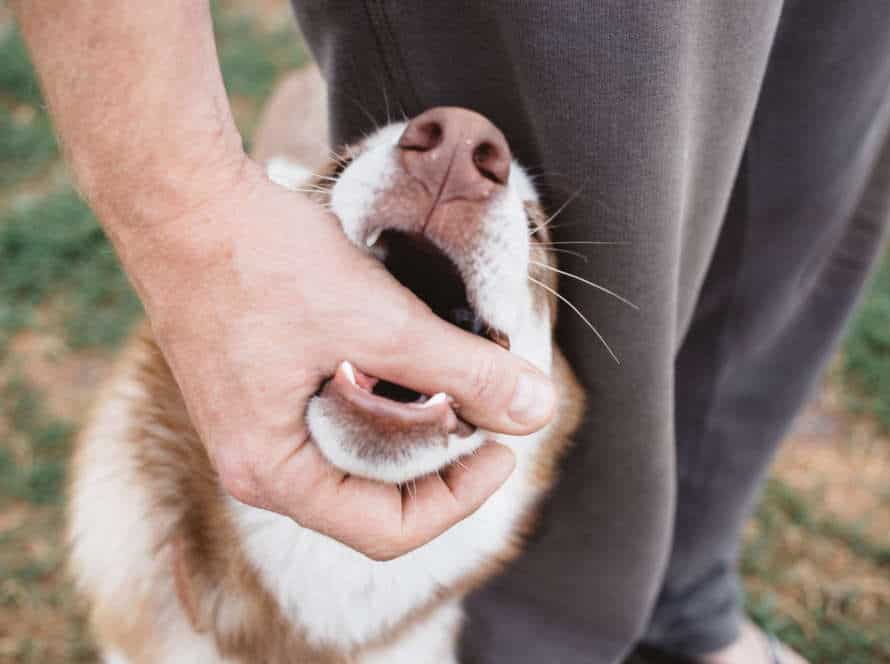How to Transition from Treats to Verbal Praise for the Down Command
Transitioning from treats to verbal praise for the down command? Easy!
The key is to make the transition gradual. Follow these simple steps:
- Decrease treat rate while your pup is obeying.
- Praise your doggo when they do it right & give treats occasionally.
- Start using verbal praise repeatedly instead of treats.
- Gradually reduce the frequency of treats until you only use verbal praise.
- With consistency, persistence & patience, success is yours! Your pup will still obey the down command even without a treat.
Why Transitioning from Treats to Verbal Praise is Important
Treats are great for rewarding your pup when they obey the “down” command. But it’s not a long-term solution. Verbal praise is better for keeping your dog motivated. Let’s talk about why we should transition from treats to verbal praise for the “down” command.
The Benefits of Verbal Praise
It is key to transition from treats to verbal praise for reinforcing desired behaviors in dogs, and for increasing the bond between a pet and their owner. Verbal praise is a great training tool that can be used anywhere, any time. Plus, it can have a good effect on a dog’s behavior and well-being.
To transition from treats to verbal praise when teaching your dog the down command:
- Gradually reduce the use of treats and amplify verbal praise with the reward.
- Eventually, your dog will connect the verbal praise with positive reinforcement. No more treats needed!
This transition can help your dog become less reliant on treats and more responsive to your verbal cues. This will strengthen the trust and communication between you and your furry friend.
The Drawbacks of Over-reliance on Treats
Relying too much on treats when training your pup can have various cons. Let’s look at why transitioning from treats to words of encouragement is needed:
- Obesity: Over-treating your pooch can cause weight gain and health issues in the long run.
- Addiction: Relying heavily on treats will make your pup dependent on them for good behavior. This may lead to disobedience when no treats are available.
- Limited progress: Difficulty transitioning from treats to verbal praise may slow down further training.
Here’s how you can transition from treats to words of encouragement for the “down” command:
- Begin by giving your pup a treat when they perform the “down” command.
- Gradually reduce the number of treats and use words of encouragement like “good boy/girl” or a tummy rub instead.
- Eventually, rely on verbal praise alone to reinforce good behavior and remove treats.
Pro Tip: Keep training sessions brief to avoid frustration for both you and your pup.
The Importance of Building a Strong Verbal Command for your Dog
For successful communication and obedience training, forming a strong verbal command for your pup is vital. Over-reliance on treats can avert your pup from responding to your commands, sans them. To transit from treats to verbal praise for “down” command, follow these steps:
- Start by practising the “down” command with a treat in hand.
- When your pup starts regularly responding to the command, start removing the treat slowly.
- If your pup performs the “down” command without a treat, reward it with verbal praise and positive reinforcement through petting/belly rub.
- With time, reduce the amount of treats given and depend more on verbal cues and positive reinforcement.
By creating a strong verbal command, your pup will become more attentive, better trained and a delightful companion. A tip – always be consistent in your commands and encourage good behavior with lots of love and praise!
Preparing for the Transition
Making the switch from treats to verbal praise for the “down” command is awesome! But, it won’t happen in a jiffy. It takes time, concentration and consistency to get there. Knowing what to do to prepare is essential for success.
Let’s chat about what preparations are needed and why they are so crucial.
Mastering Down with Treats First
Training your pup to obey the “down” command with treats is a great way to start. Follow these steps:
- Lure your pup into the “down” position with treats.
- As soon as they get there, give them a treat and say “good boy/girl” in a happy voice.
- Do this multiple times until they understand the “down” command and respond to it with a treat.
- Gradually reduce the treat amount and increase verbal praise.
- Eventually, your pup will only respond to the command with verbal praise and treats can be given as a reward.
Be patient and consistent for best results!
Choosing the Right Command Word
Choosing the right command word is important when transitioning from treats to verbal praise for the “Down” command when training your pooch. Here are few tips:
- Keep it simple and memorable. Avoid words that are hard for your doggo to understand.
- Choose a word that stands out from the other commands. This will help your pup differentiate between them.
- Go for a word that you are happy to say many times, even in public.
- Use a short and sharp word that your dog can relate to the action quickly.
- Once you have picked a command word, use it all the time. Initially, reinforce it with verbal praise and treats. Gradually reduce the treats and rely only on verbal praise to reward your pup’s obedience.
Establishing a Strong Bond with Your Dog
Transitioning to verbal praise for the down command builds a strong bond with your pup. Here’s how:
- Start with positive reinforcement. Use treats to reward the “down” command, then slowly reduce treats as your dog understands it.
- Introduce verbal praise. Once your dog knows “down,” start praising them with words like “good job” or “well done!“
- Be consistent. Use the same command and tone of voice for “down” every time. Routine will help them learn best.
- Use positive body language. Smiling and patting their head with verbal praise reinforces good behavior.
Keep in mind, the goal is to create a strong and positive bond. Transitioning from treats to verbal praise helps achieve that.
The Transition Process
Train your pup to obey commands such as “down”! This can help control their behavior in tricky situations. Plenty of pet owners have had success using treats. However, if you prefer to use verbal praise instead, you’ll need to modify the training process. Here’s what you need to do for a successful transition from treats to verbal praise!
Introducing Verbal Praise
It’s vital to switch from treats to verbal praise for the down command in dog training. Introduce verbal praise slowly and systematically to guarantee successful, consistent obedience and motivate your pup.
Here’s what you must do for the transition:
- Give the down command as usual, but say “good dog” or “well done” straight away too.
- Over time, lessen treats given during practice from each time to once in a while.
- Increase verbal praise, so it’s more than the number of treats given.
- Train the verbal cue in different places and situations till your dog only responds to the verbal command.
Make sure the verbal praise stays positive and upbeat, so there’s a long-term, pleasant connection in the pup’s mind between the command and you.
Pairing Verbal Praise with Treats
Pairing verbal praise with treats is an effective way to transition from treats to verbal praise for the “down” command. Here’s how:
- Start practicing the “down” command with treats as rewards.
- When your dog succeeds, give them verbal praise right away like “good job!” or “that’s it!“.
- Reduce the frequency of treats and increase the frequency of verbal praise.
- Once your dog starts responding to verbal praise, phase out treats and just use verbal praise as reward.
- Always use positive reinforcement and consistency when teaching your furry friend good behavior.
Gradually Phasing Out the Treats
Gradually transition your pup from treats to verbal praise for the down command. Be consistent! Here’s how:
- Begin by luring your pup into the down position with a treat in your hand.
- Praise and reward your dog with the treat right away.
- Decrease the treat frequency and use verbal praise instead, like “good dog!” or a belly rub.
- Stop using treats altogether and only use verbal praise and positive reinforcement.
Be patient and consistent with the transition process- it may take several weeks or months for your pup to fully adjust to verbal praise.
Reinforcing the Verbal Command
Reinforcing the verbal command for the down command is key to transitioning from treats to verbal praise. This transition is a must in training your pup. The goal? To help your pup understand and respond to the verbal command. No more treats needed!
Here, we’ll discuss how to transition from treats to verbal praise for the down command.
Using Verbal Praise Consistently
To transition from treats to verbal praise for the “down” command, you need consistent use. Follow these steps:
- Train your pup to link the “down” command with a reward.
- When they have learned it, gradually replace treats with words like “good boy/girl”.
- Verbal praise every time they obey.
- Add physical reward, like scratches or pats, for reinforcement.
- Gradually reduce physical rewards, relying only on words.
- With patience and time, your furry friend will obey without treats or physical rewards.
This will strengthen your bond.
Adding Non-Verbal Cues
Add non-verbal cues to your dog’s training. This will help move from treats to verbal praise for the “down” command.
Hand Signal: Use a consistent hand signal, like pointing to the ground, when giving the command. Practice it until your dog responds without verbal cues.
Body Language: Stand tall and be confident. Avoid slouching or looking unsure.
Eye Contact: Make eye contact with your dog. This establishes you as the leader and reinforces the verbal command.
By using these non-verbal cues, your dog can understand and obey verbal commands without treats. Pro tip: Always reward with verbal praise and affection when the “down” command is done without treats.
Focusing on Positive Reinforcement
Focusing on positive reinforcement is key for transitioning from treats to verbal praise for the “down” command when training your dog. Here’s how:
- Start with treats as primary reinforcement during initial training.
- Then, gradually reduce treat rewards and increase verbal praise.
- Verbal praise like “good boy/girl” or “well done” plus a treat reward reinforces the behavior positively.
- This connection between action and praise is strong and encourages the dog to do the behavior on its own.
- Be consistent with training and rewards – focus on positive reinforcement like affection, touch, verbal praise, and occasional treats.
- Remember – every dog is different and patience is necessary during transition from treats to verbal praise.
Troubleshooting
Your pup not answering to the down command? It could be because you’re relying too much on treats. To get them to listen to your verbal praise instead, transition from treats to verbal praise. It’ll take patience and consistency, but it can be done! Here’s how to make the switch:
Identifying and Overcoming Challenges
Transitioning from treats to verbal praise for the “down” command is a challenge many dog owners face. Here are some tips to make it simpler:
- Start small. Reduce the number of treats you give your pup for the “down” command. Instead of a treat each time, offer a treat every other or third time.
- Add verbal praise. As you reduce treats, use verbal praise such as “good dog” or “great job” to reinforce behavior. Use a consistent tone and positive body language.
- Be patient. Changing behavior takes time. Don’t get frustrated if your dog doesn’t respond to verbal praise right away. Keep reinforcing behavior and they’ll make the connection between command and praise.
- Be consistent. Dogs respond best to clear and consistent communication. So use the same commands and body language each time. With patience, consistency, and positive reinforcement, you can transition your pup to verbal praise for the “down” command!
Common Mistakes to Avoid
Transitioning to verbal praise for the “Down” command can be tough. But, knowing what mistakes to avoid can make it easier. Here are some of those mistakes:
- Going cold turkey – Abruptly stopping treats could confuse your pup and make them less likely to obey.
- Inconsistency – Using treats and verbal praise interchangeably makes the transition harder.
- Timing – Verbal praise must be given immediately after the desired action. Else, your pup might not link it to the behavior and lose motivation.
To stay away from these blunders, reduce treats over time and consistently use verbal praise. Also, follow it up with a treat sometimes. With time, your pup should respond to verbal praise alone.
Pro tip: Use a clear, specific command for the “Down” command. This makes it easier for your pup to understand.
Seeking Professional Help when Necessary
Transitioning from treats to verbal praise for the “down” command? Challenging! Get help for an easier, more effective process. Here are some tips a trainer might suggest:
- Practice “down” with treats as usual, decreasing frequency and amount.
- Incorporate verbal praise while phasing out treats.
- Avoid reverting to treats when pup doesn’t comply.
- A trainer can troubleshoot issues, give individual advice.
Pro tip: Stay patient and consistent, reward good behavior with verbal praise and positive reinforcement.
Frequently Asked Questions
1. Why is it important to transition from treats to verbal praise for the down command?
Answer: It is important to transition from treats to verbal praise for the down command because relying solely on treats can lead to your dog becoming too dependent on them and not listening without them. Also, using verbal praise as a reward builds a stronger bond between you and your dog.
2. When should I start to transition from treats to verbal praise for the down command?
Answer: Once your dog understands and consistently responds to the down command with treats, you can begin to incorporate verbal praise as a secondary reward. Gradually decrease the frequency of treats and increase the amount of verbal praise as your dog shows progress.
3. What kind of verbal praise should I use?
Answer: You can use any positive and encouraging words or phrases such as “good boy/girl,” “well done,” or “great job.” Make sure to use a happy and enthusiastic tone of voice to show your dog that you are pleased with their behavior.
4. Can I still use treats occasionally?
Answer: Yes, you can still use treats occasionally as an extra reward for particularly good behavior or during training sessions. Just make sure to use them sparingly and rely more on verbal praise as your main form of reward.
5. What should I do if my dog doesn’t respond to verbal praise?
Answer: If your dog isn’t responding to verbal praise, it may be because they haven’t made the association between the praise and the behavior. Make sure to use your chosen verbal praise consistently and immediately after your dog performs the desired behavior. You can also try using different types of praise or a combination of praise and treats until your dog starts responding to verbal praise alone.
6. How long does it take to fully transition from treats to verbal praise?
Answer: The amount of time it takes to fully transition from treats to verbal praise varies for each dog. It depends on their individual temperament, level of training, and how consistent you are in using verbal praise. With patience and persistence, most dogs can make the transition within a few weeks to a few months.







